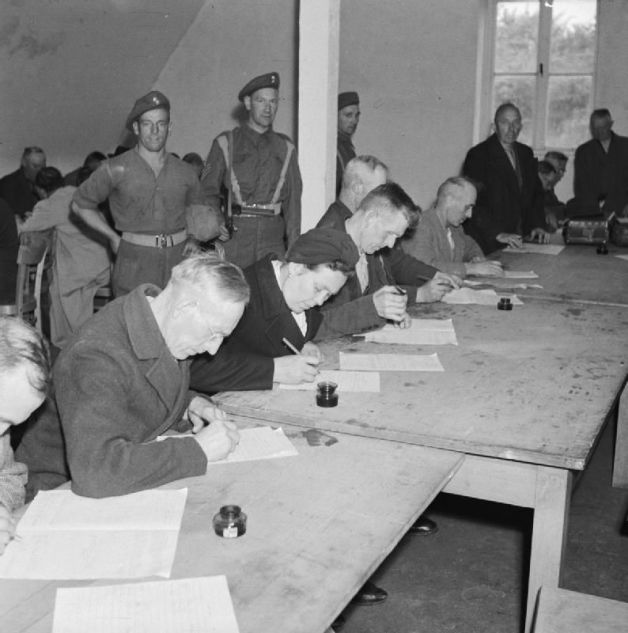On March 5, 1946, German self-governing bodies enacted Law No. 104 “On the Liberation from National Socialism and Militarism.” The law was developed by the ministries of justice from the states of Bavaria, Baden-Württemberg, and Hesse.
The law was issued as an 88-page brochure. It became one of the legal expressions of the principle of five “Ds” adopted at the 1945 Potsdam Conference: denazification, demilitarisation, democratisation, decentralisation and decartelisation.
The law established five categories of involvement in National Socialism: “1. Major Offenders, 2. Offenders (activists, militarists, and beneficiaries), 3. Lesser Offenders (probation group), 4. Followers, and 5. Persons Exonerated.” Each degree carried a specific penalty, ranging from imprisonment to fines or forced labour for up to 30 days.
Several lawyers stated that the Law No. 104 incriminates almost every German. The law obliged every adult German to fill in a special and lengthy questionnaire to determine the degree of their guilt, as well as their involvement in Nazism. Around 13 million people were surveyed in the American Zone of Occupation.
Roughly 613,000 people of the 13 million respondents were found guilty in various degrees. Those subject to the denazification procedure had to prove with the testimony of witnesses "flawless political conduct of the accused and his true Christian way of life." These testimonials were called persilschein – "washings" – after the name of the Persil washing powder. The word entered dictionaries and became commonly-used.
Many representatives of the German elite managed to escape the denazification, regardless of the deeds committed. However, the most notorious were judged and punished.
Later, the law was considered to be insufficient. On October 12, 1946, the Control Council issued directive No. 38 “The Arrest and Punishment of War Criminals, Nazis, and Militarists and the Internment, Control, and Surveillance of Potentially Dangerous Germans.”
Source:
Evgeniya Lezina “Denazification of West Germany. 70 years since the completion of the program”. The Russian Public Opinion Herald, №. 3-4 (127) 2018.
























